It’s hard to find a more nutritious superfood than spirulina; unsurprisingly, spirulina supplements are among the most popular in the world.
Spirulina is a blue-green algae packed with vitamins, minerals, and fatty acids. Its nutrient profile is so powerful that it’s used to support the health of astronauts in space.
Let’s look at the many health benefits of spirulina.
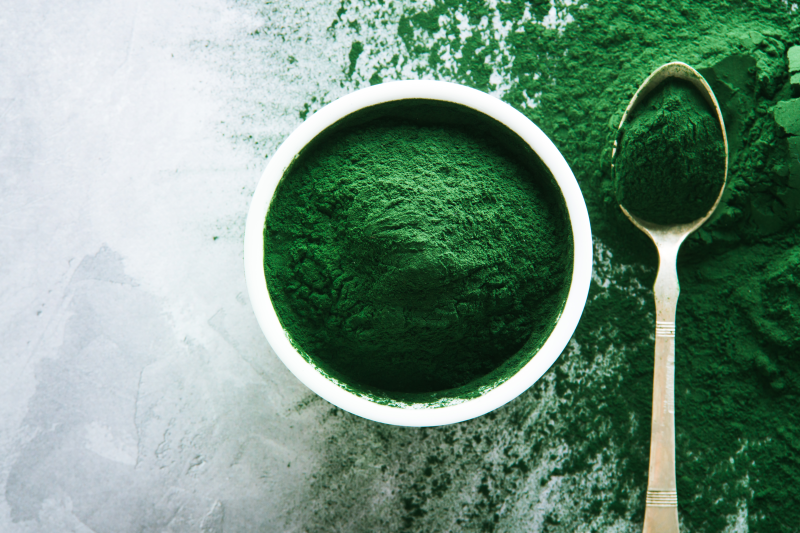
What is spirulina?
Spirulina is an edible seaweed that naturally grows in saltwater and nutrient-rich freshwater lakes, rivers, and ponds.
Spirulina absorbs nutrients and antioxidants from the surrounding water and utilizes sunlight for photosynthesis. This results in highly concentrated levels of essential nutrients and phytochemicals, making spirulina exceptionally nutritious.
The use of spirulina as a nutrient source and remedy for ailments dates back centuries. It’s believed that the Aztecs first discovered spirulina and consumed it to boost energy and promote longevity.
In this day and age, spirulina supplements are convenient and easy to consume. They’re typically available in powder form or as spirulina tablets.
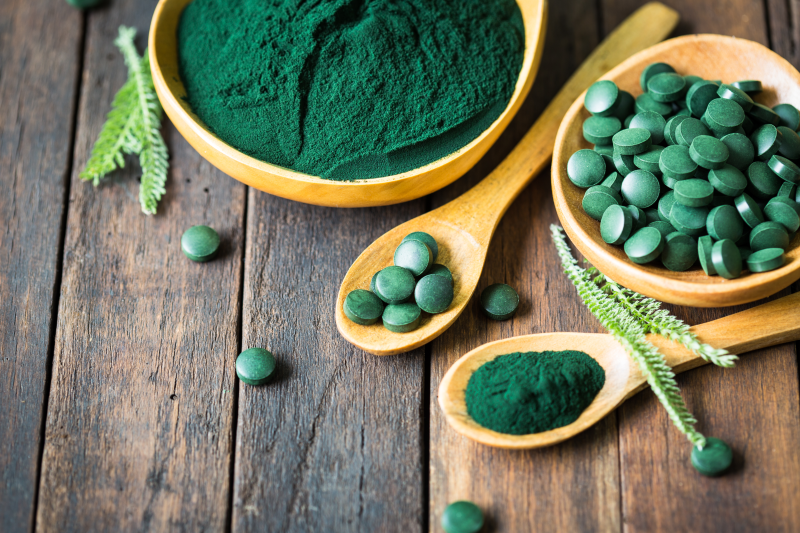
Why do astronauts use spirulina?
Astronauts face extraordinary challenges. They rely on peak physical and cognitive health to sustain an extremely demanding environment. Exercise and nutrition play an essential role in maintaining astronauts’ health. NASA recognized the need for optimal nutrition for their astronauts and funded research to identify a nutrient-dense food that also is practical and convenient. The final report recommended spirulina as the most nutritious option to counteract space travel’s many adverse health implications. Spirulina is rich in essential nutrients, amino acids, and fatty acids and has potent antioxidant and anti-inflammatory properties. Its nutritional profile supports bone density in an anti-gravitational environment and lowers the impact of radiation astronauts are exposed to during space travel. In addition, spirulina has a long shelf life. It can be stored and transported easily, making it a convenient nutrient source for astronauts. Watch the video below to learn more about spirulina’s many health benefits and why adding spirulina to your diet is a great way to support your health–even if you aren’t traveling to space.
Spirulina benefits
Research suggests spirulina supplementation is an excellent choice to promote a healthy body. This study confirms that consuming spirulina boosts your body’s total antioxidant capacity and lowers chronic inflammation, which may reduce the risk of various diseases, including metabolic syndrome, heart disease, mood disorders, and cancers. Here are nine reasons why you should be taking spirulina regularly.
1. Nutritional powerhouse
Spirulina is one of the best sources of vitamins and minerals on our Healthy Keto® food list. It contains all nine essential amino acids and provides potent health-promoting phytochemicals. Spirulina is an excellent source of:
- Vitamin E
- Vitamin C
- Vitamin B1
- Vitamin B2
- Folate
- Iron
- Potassium
- Calcium
- Copper
- Beta-carotene
- Chlorophyll
- Phycocyanin
Many of spirulina’s nutrients have powerful antioxidant properties that protect your body from free radicals, a group of metabolic by-products that can cause oxidation and cellular damage. Oxidative damage can significantly impact your tissues and organs. It’s linked to premature aging, chronic inflammation, and serious health conditions, including cancer. Phycocyanin is a unique antioxidant only found in blue-green algae such as spirulina. Spirulina also contains gamma linoleic acid, an essential fatty acid that regulates metabolic function, supports skeletal and cognitive health, and promotes reproductive health.
2. Supports healthy cholesterol levels
Spirulina consumption can have potential health benefits for people with high cholesterol levels.
Regularly taking spirulina increases heart-healthy high-density lipoprotein (HDL) cholesterol and can reduce levels of small dense low-density lipoprotein (sdLDL-p) cholesterol, which is linked to an increased risk of chronic inflammation, stroke, and heart disease.
Although more research is needed, it’s believed that spirulina’s overall beneficial impacts on metabolic function support healthy blood lipids and balanced total cholesterol levels.

3. Promotes healthy blood pressure
Spirulina’s benefits for cardiovascular health are well-documented. Spirulina’s potent antioxidant capacity protects your blood vessels from harmful oxidation, lowering the risk of arterial plaque formation and high blood pressure. Spirulina stimulates the production of nitric oxide, which helps your blood vessels relax and can reduce blood pressure. This study found that six weeks of spirulina supplementation significantly reduces systolic and diastolic blood pressure.
4. Improved blood sugar control
Some research indicates that phycocyanin, the pigment giving spirulina its distinct color, increases cellular insulin sensitivity and directly lowers blood glucose levels. Balanced blood sugar levels support healthy body weight and reduce the risk of diabetes.
5. Promotes strong immunity
Spirulina has been used to strengthen the immune system for centuries. Spirulina is rich in immune-boosting nutrients, including vitamins E and C, beta-carotene, and iron. Regular spirulina intake promotes the function of immune cells that protect you from bacterial and viral infections. Spirulina may be an excellent choice for you if you suffer from allergic rhinitis. Spirulina inhibits the release of histamines, a substance that triggers allergic reactions, including sneezing, itchy eyes, and hives.
6. Lowers the risk of cancer
Spirulina may be beneficial in reducing your risk of certain cancers, including pancreatic and oral cancer.
The anticancer properties of spirulina are likely a combination of its immune-strengthening nutrients and the ability to lower inflammation.
Evidence suggests that spirulina lowers cancer risk and can be a beneficial dietary supplement during chemotherapy treatment. However, further human clinical trials are needed to confirm spirulina’s role in cancer prevention.
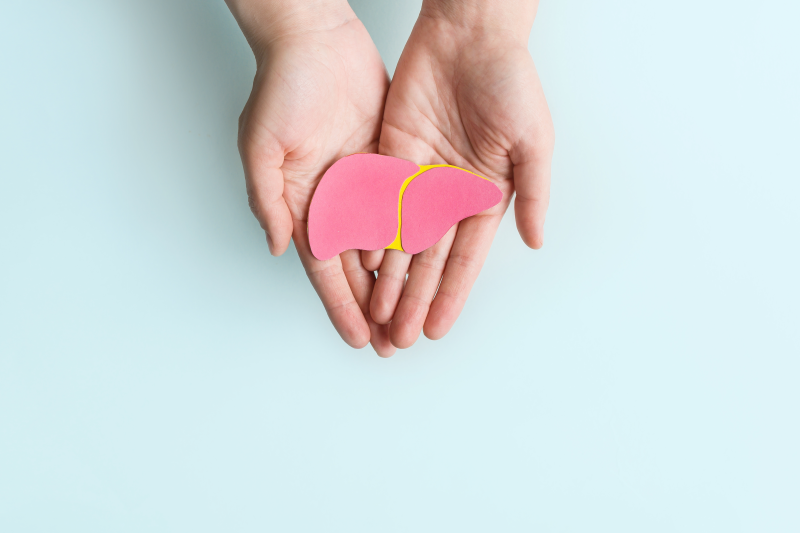
7. Supports liver health
Spirulina is an excellent choice to support your liver health. It helps balance liver enzyme levels, promotes healthy fat metabolism, and lowers oxidative stress in the liver. Regular spirulina intake has been found to lower the risk of liver damage and nonalcoholic fatty liver disease.
8. Supports eye health
Spirulina contains high levels of carotenoids, including beta-carotene, which has antioxidant properties that protect the delicate tissue in your eye from damage caused by free radicals. In addition, spirulina may reduce inflammation and improve symptoms of eye conditions, including age-related macular degeneration and glaucoma, the world’s leading causes of blindness.
9. Reduces risk of anemia
If you are prone to anemia, spirulina supplementation can be a great option to support your health.
Spirulina is exceptionally rich in iron, an essential component of hemoglobin, the protein in red blood cells that carries oxygen throughout your body.
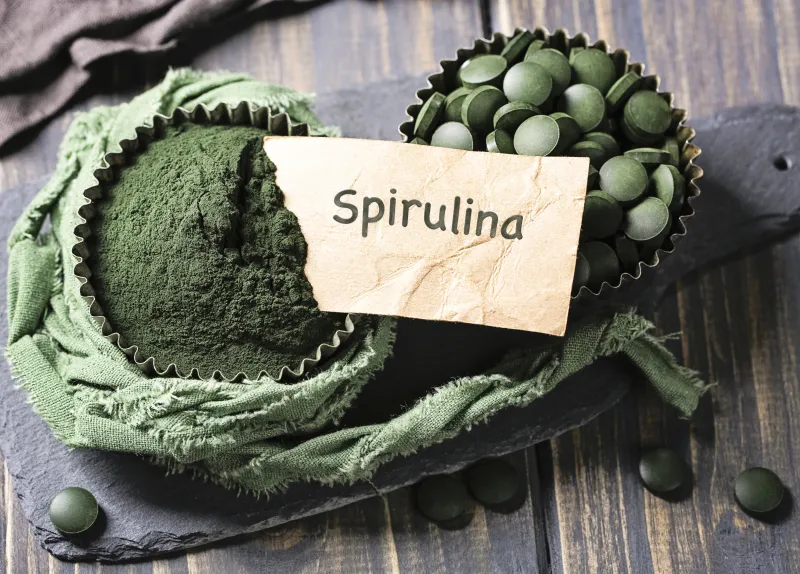
How to add spirulina to your diet
Spirulina is typically taken as a pill, capsule, or powder. The recommended dosage will vary depending on the brand you choose. It’s important to follow the instructions on the product label.
If you take spirulina in powder form, you can mix it into water or other beverages, including smoothies or almond milk.
Spirulina is generally safe and well tolerated. However, it’s important to note that spirulina can interact with blood thinners and immunosuppressants.
People that take medication to treat high blood pressure or autoimmune diseases, including multiple sclerosis and rheumatoid arthritis, should speak to their doctor before taking spirulina.
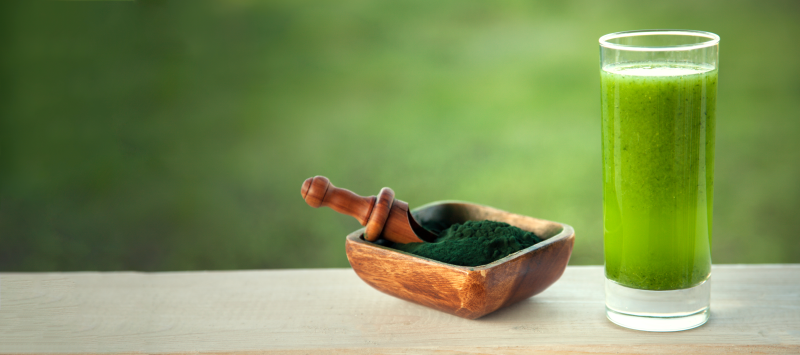
Key takeaways
Spirulina is a superfood used to promote health and well-being for centuries. It’s exceptionally rich in vitamins, minerals, antioxidants, fatty acids, and other health-promoting nutrients essential for good health. Spirulina supplements are widely available and typically come in convenient tablet form or as a powder that can be mixed with your favorite beverages or smoothies. Spirulina is safe and generally well tolerated. Consuming spirulina can improve your well-being, support your immune system, and lower the risk of cancer, cardiovascular disease, and diabetes.
FAQ
1. What are the health benefits of spirulina?
Spirulina is a blue-green alga high in vitamins, minerals, fatty acids, and other health-promoting nutrients. Spirulina is considered a superfood with numerous health benefits. Regular spirulina consumption promotes cardiovascular health and strong immunity, supports vision and liver health, and may reduce the risk of cancers, including oral and pancreatic cancer.
2. Is spirulina keto-friendly?
Yes, spirulina is keto friendly. It’s high in protein, healthy fatty acids, and low in carbohydrates, making spirulina a great source of nutrition on a ketogenic diet.
3. Is spirulina low-carb?
Yes, spirulina is low in carbohydrates. One tablespoon of spirulina powder contains less than one gram of carbohydrates, making it a highly-nutritious keto-approved food.
4. Why does NASA use spirulina?
Spirulina is one of the most nutrient-dense food sources, making it a perfect nutrient source for astronauts on long-term space missions. Spirulina is rich in vitamins and minerals and has potent antioxidant and anti-inflammatory properties that help astronauts to counteract some of the adverse health implications of space travel.
5. Is spirulina safe?
Spirulina can absorb compounds from surrounding waters and may be contaminated with harmful substances, including heavy metals or microcystins, which can be toxic if consumed in large amounts. However, most spirulina supplements are produced with algae from specialized spirulina farms that closely monitor water quality and greatly reduce the risk of contamination. Overall, spirulina is a nutritious and safe food that can provide a wide range of health benefits.
6. Can I have spirulina daily?
Yes, you can have spirulina daily. The recommended daily intake of spirulina varies depending on the brand you choose, but most people can safely consume around two grams of spirulina powder daily.







